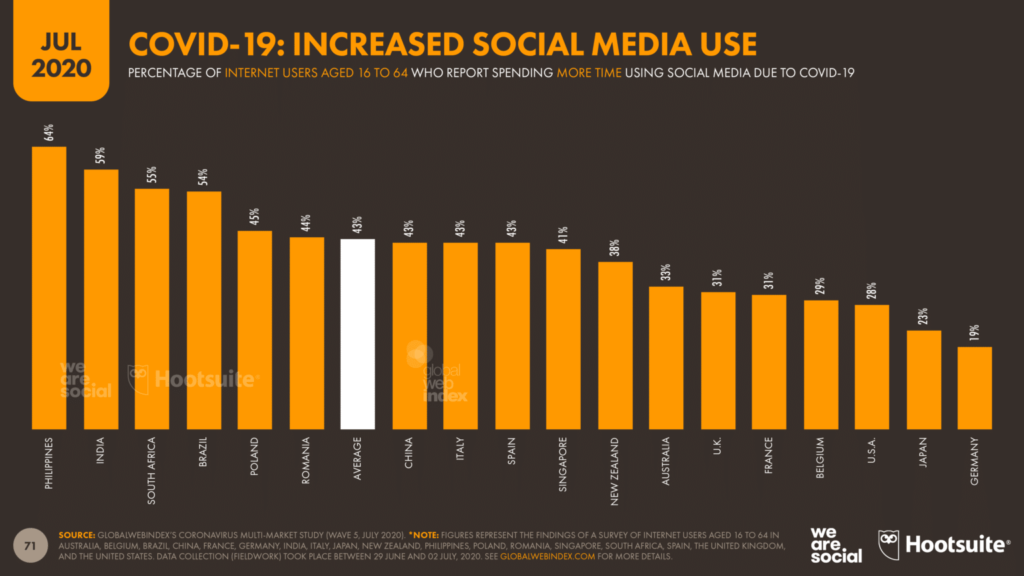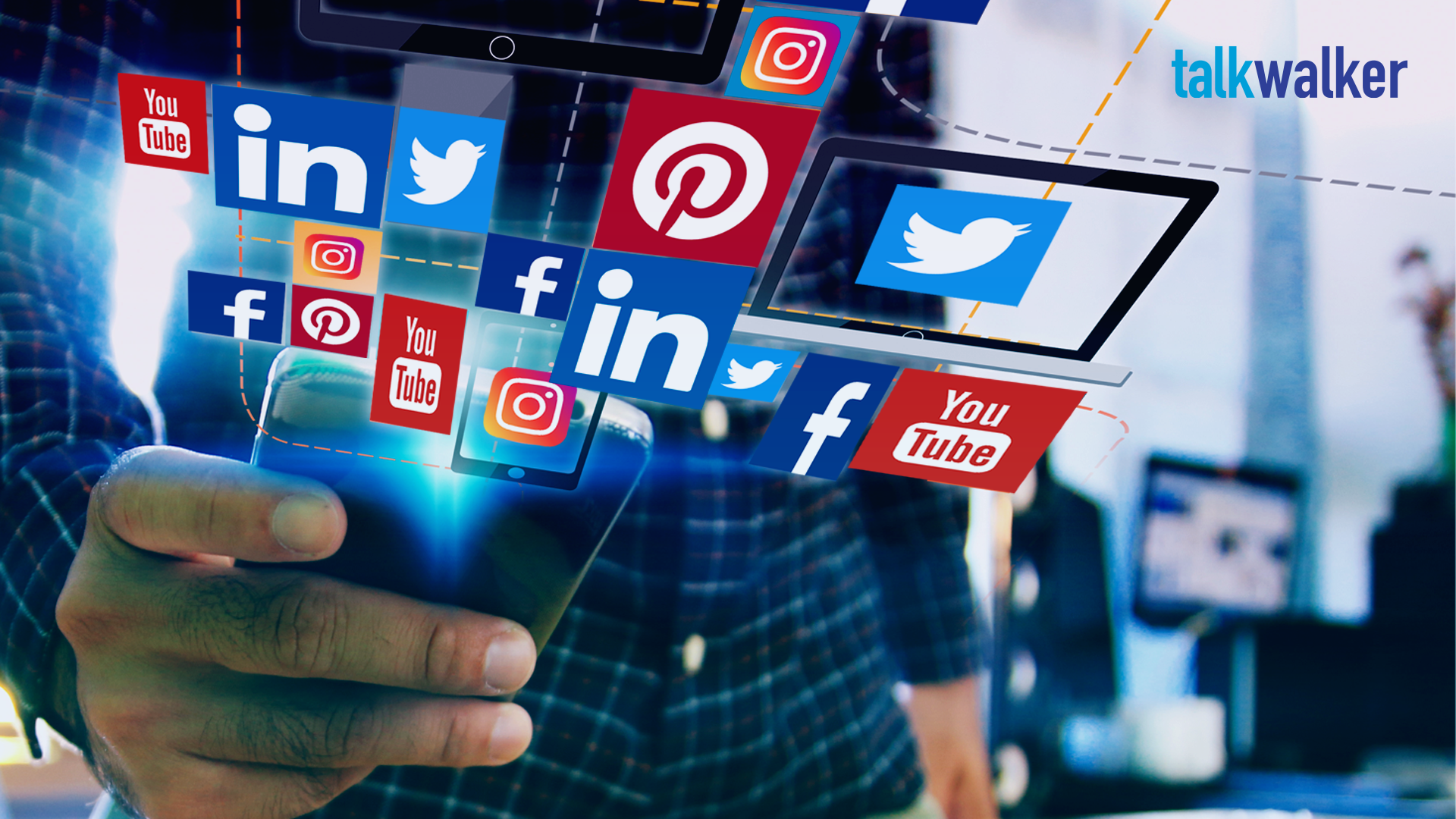Just like we have seen with other crises, people all over the world reach out to each other through social media to make sense of what is happening. Since March Social media has been one of our best friends, while in this quarantine many of us only have the single social interaction of our families and others that were not able to be with their families had to spend this time alone. We have increased our forecast on mobile messaging and time spent by US adults to grow by 4 minutes in 2020, to 24 minutes per day, not only due to the pandemic but also data showing strong engagement on messaging services like Facebook Messenger, WhatsApp, and Apple iMessage. The social media have been the only way to stay connected with the outside world, with our families and our friends, for some this has been the only way to connect with their work, their co-workers and it has been the greatest form of entertainment as well as the biggest platform of information. Social media has been a way to coope the reality of what was going on at that time and a way to maintain our self informed on how the world was doing and where people could find help. We could think of the many funny videos about how people creatively deal with the lockdown, of the neighborhood Facebook groups that organize entertainment and practical support to help neighbors who need assistance with grocery shopping or childcare, and the quick rise of apps and functionalities that allow for live chat and video sessions with multiple people. A lot of people found psychology, teachers, and a lot of information about places where food could be delivered to home at times when some people were not able to look for their own food.
The role of social media during socially challenging times like today also adds a new angle to the long-standing debate about reinforcing vs. displacing effects of online communication on in-person connections. Whereas it has been established that social media use can reinforce and does not reduce in-person contact, the COVID-19 outbreak underscores a different social compensatory role of social media. When in-person connections are displaced, not by social media, but by outside forces and disruptions such as the virus outbreak, online communication can provide a much-needed remedy for staying in touch and connected.While social media can undoubtedly help us maintain a sense of normalcy and social touch, this is not to say that its effects are unequivocally positive, and we can be on social media 24/7.Being mindful of this dualism, we should remember to take breaks from our digital devices and screens and engage in other meaningful activities in our lives, such as doing fun activities with our partners and families as challenging as it can be when families are cooped up together for weeks and spending time outdoors, to maintain a balance in our lives.

These positive outcomes could be related to the population following the Darley and Latane’s five steps, The first step is identifying and recognizing that there’s a problem in this case we as a society identify that the virus was a big problem that was affecting us.
Secondly, is the ability to interpret the conflict as an emergency, as a society we identify that this virus is an emergency and we start to share this information. Social media became a way to let everyone know how dangerous this virus is.
The third step is taking responsibility for helping, in this case we as a community can take responsibility for following the lock down that has been implemented and avoiding spreading the virus or getting it. As well finding ways in which we could assist those who are in a worse place than us. In this apps like Zoom, Facetime, instagram, whatsapp and Facebook among others apps help us to maintain distance and make the lock down
In this instance, step four, deciding how to help in this case we as a society have been informed that in order to help we need to keep our distance from each other and use protection like gloves, mask and hand sanitizer in order to prevent getting sick. As well for elderly people a way to help
Step 5 goes hand in hand with step four and is simply providing the assistance after you have decided the method in which you will help in this case it would be following the methods state in the step 4 and preventing going out unless needed in order to stop the spread which social media helped on this case by being the one providing the easy access for the society in order to allow the communication among distance, allowing people to buy in places like facebook and in order social medias by teaching people how to do things on their own restricting the need of other people to do this things.
Resource.
https://www.emarketer.com/content/how-coronavirus-changing-us-social-media-usage



